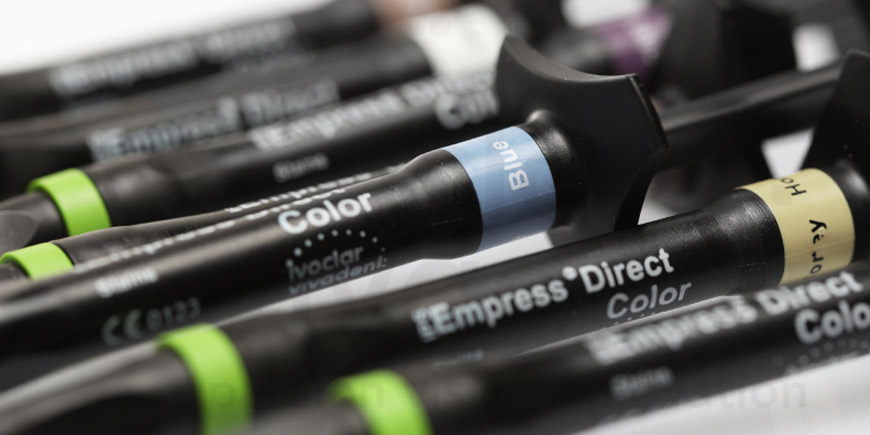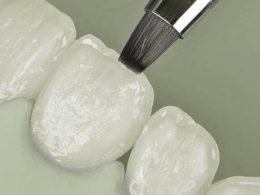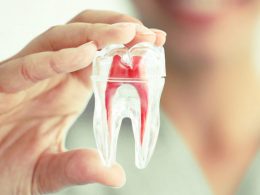Table of Contents
Many options are available for tooth fillings (to heal cavities), and all of them have their pros and cons. Types of tooth fillings include gold, silver amalgam, tooth-colored composite material, porcelain, ceramic and a special type of glass. The best dental fillings for you will depend on the demands of the case, location and extent of the defect, and your aesthetic preferences of course.
However, currently the most widely used of all in daily clinical practice for simple and immediate repairs is composite resin. Basically due to its extraordinary aesthetic appearance, easy handling, high mechanical resistance and little need for dental wear. It is the material of choice when it comes to restoring small or moderate cavities in anterior and posterior teeth, small dental fractures and making economic aesthetic reconstructions using dental bonding techniques.
What Is a Composite?
Composites, also called composite resins, are dental materials that are used to make fillings and other types of aesthetic restorations. It is one of the most used materials currently in the field of Dentistry.
Dental composites are made up of an organic matrix and an inorganic material that acts as a mineral filler.
The organic matrix is usually BIS-GMA (bisphenol glycidyl methacrylate) or UMA (urethane methacrylate). It is made up of monomers that are attached to each other through a polymerization reaction. This means that when halogen light is applied on the resin, the monomers are united to form a polymer.
The filler particles are usually minerals such as: quartz, zirconite and aluminum silicates. Mainly they provide hardness and resistance, and decrease the shrinkage of the dough when hardening.
Types of Composites
Composite resins have been classified in different ways, depending on their composition, to make it easier for Dentists to identify and use them for therapeutic purposes. The most popular classification is based on filler particle size. According to this classification composite resins are divided into macro filler composites, micro filler composites and hybrid composites (fillers of different sizes).
Conventional or Macro-Filled Composites
Commonly used filler is crystalline quartz, which has got excellent optical properties, and chemical inertness. These traditional quartz particles were produced by grinding or milling with a particle size of around 8-12 microns. It is extremely hard, difficult to carve and polish, it has the potential to wear down the opposing tooth structure and the need to use it in a plastic state, tends to accumulate quartz particles on its surface, making it very rough.
Micro-Filled Composites
They were developed to provide better aesthetics and polishability. These resins with tiny silica particles are only 0.04 microns in diameter and are produced by a pyrolytic process. With them, a smoother surface can be achieved due to the smaller size of the filler particles. However, they need to be present in large quantities, which requires more resin matrix to wet the surface. This results in an extremely high viscosity material, which makes clinical handling difficult.
To maximize filler loading and reduce viscosity, pre-polymerized resin portions and other micro-fillers are used. The pre-polymerized resin is ground into 30-65 micron particles and mixed with additional micro-fillers to obtain a percentage of between 30 and 50% of the total volume of material.
However, the mechanical properties of this type of resins, such as strength and rigidity, are generally lower than those of macro-filler, which often limits its use to areas that do not support stress. In addition, micro-fillers are usually radiolucent (not visible on radiographs), which practically limits their application to anterior areas.
Hybrid Composites
Currently, the most common filler material for these resins is barium glass with an average particle size of 0.6 to 1.0 microns. A small amount of micro-filler is also added to improve handling properties and make them less sticky. To incorporate the maximum amount of filler possible into a resin matrix, it is necessary to add several particle sizes.
These composites are potentially superior because by having a higher filler content, they improve the transfer of stresses between the material particles. The current trend is to maximize the filler charge and reduce the particle size as is the case with so-called micro-hybrids.
Nanohybrid composites combine nano-sized particles with more conventional filling technology.
Posterior Composites Restorations
In the past, composite materials, called aesthetic restorative materials, were used exclusively in anterior tooth restorations because they were tooth-colored but lacked the mechanical properties required by the materials used in posterior teeth.
However, with the advances made over time, the mechanical properties of these materials have been considerably improved and their indication extended to the restoration of molars and premolars, so much so that the use of silver amalgam is now questioned.
What Are Packable Composites?
They represent a further step in the evolution of these materials. Packable resins have higher viscosities than the materials described above, and were created for Dentists who wanted to do without amalgam and use a tooth-colored posterior restorative material, but with similar physical and handling characteristics to metal alloy. These packable composites are stiffer and less sticky than traditional resins, and allowed for easy placement.
Manufacturers have removed the stickiness by altering the morphology of the filler and the monomers of the matrix.
High density posterior resins or packable composites are widely marketed as amalgam substitutes. Its handling properties are similar to it and allow the cavity to be filled by applying pressure forces, thus achieving tight and well-matched interproximal contacts.
“Currently, More Than 95% of Dental Cavities Are Treated with Composites or Composite Resins”.
DENTAL TIP
What Are the Advantages of Composite Resin Fillings?
Undoubtedly, their most appreciated advantage is concentrated on the aesthetic factor. If the operator is skillful and well trained, these resins allow to make restorations that perfectly mimicry with natural teeth, unlike other materials. However, composites also offer important additional benefits, among which we can find:
1- Less Tooth Wear Is Required Compared to Other Types of Material As they are adhesive materials that are attached to the tooth by chemical processes, it is not necessary to carve retentive cavities for their mechanical retention, as is the case with silver amalgam. This plays a very important role in preserving the structural integrity of the part and reduces its chances of fracture.
2- Composites Are Placed in Incremental Layers Layer after layer is placed, allowing greater control over the adaptation and sealing of the filling.
3- Harden or Polymerize with Light Once the material is applied to the tooth, a special halogen light is placed inside the mouth to make it harden. This provides unlimited working time for the practitioner, allowing them to achieve the greatest detail and precision in treatment. Other materials are characterized by hardening themselves and very quickly, which forces them to be worked with haste and extreme skill.
4- They Mimic Perfectly with the Natural Tooth Due to their considerable aesthetic benefits, these materials are perfect for restoring shallow or small fractures, which in other times would have required more complex and expensive restorations such as ceramic crowns. They can even be used to make veneers and correct a large number of cosmetic defects in the smile.
5- They Produce Less Tooth Sensitivity This is because the resin insulates the teeth from the hot and cold temperatures of the food and beverages we consume daily.
6- They Can Be Repaired If the composite wears, fractures or pigments; there is the possibility to repair or replace the damaged layer or portion. In other words, it is a material that accepts the addition of new layers, giving it enviable versatility.
Venezuela Offers Beautiful Smiles and Affordable Dental Care!
DENTAL VIP is a modern dental clinic, specialized in advanced diagnostics and treatment of dental and oral disorders, that offers Dental Tourism opportunities in Venezuela for everyone who wants to have a high-quality dental service and also save a lot of money.
We offer comprehensive services from all fields of Dentistry. In addition to high-end dental equipment, all services are provided in a comfortable, luxury environment. New patients are welcome with a prior consultation and online evaluation.
Get in touch with us and our staff will inform you how to get your budget, how to plan your trip and how to achieve that smile you long for!












